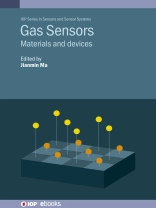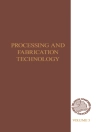Gas sensors are traditionally used as part of an industrial safety system, but they are also increasingly found in a range of settings including home and vehicle security, ventilation systems and environmental monitoring. The technology also holds great promise in non-invasive medical applications and as an essential component in the future Internet of Things. Metal oxide semiconductors are the most common materials exploited for gas sensing. However, in recent years there have been significant advances in both fundamental research and industrial development of gas sensors using new and novel materials. This is being driven by efforts to achieve better selectivity, higher sensitivity and lower power consumption as gas sensors are finding more widespread applications. This book reviews the developments and applications of traditional and emerging materials for gas sensors. Each chapter considers a sensor material and discusses the mode of operation, intrinsic material properties, preparation, device construction and areas of application opened by the novel modes of action and properties of the sensing material. With coverage spanning n- and p-type metal oxides, graphene, 2D metal chalcogenides, carbon nanotubes, ionic liquids and conducting polymer composites. This up-to-date synthesis will provide invaluable reading for industrial and academic researchers and engineers developing and exploiting new materials for the increasingly diverse areas of applications for modern gas sensors.
Key Features
- Suitable to broad readership from advanced students to research scientists.
- Interdisciplinary readership, from material scientists to sensor developers
- Includes latest materials for sensor development.
- Encompasses industrial and other applications.
Table of Content
Preface
1 n-type Oxides for Gas Sensors
2 p-type Metal Oxides for Gas Sensors
3 Layered Metal Chalcogenides for Gas Sensors
4 Graphene for Chemoresistive Gas Sensors
5 Gas Sensors Based on Carbon Nanotubes
6 Ionic liquids and Their Solid-State Analogues for Gas Sensors
7 Electrochemical Conducting Polymer Composites for Gas Sensors
About the author
Jianmin Ma is a professor at the University of Electronic Science and Technology of China, Chengdu, China. He received his BS degree in Chemistry from the Shanxi Normal University in 2003 and Ph D degree in Materials Physics and Chemistry from Nankai University in 2011. During 2011–2015, he also conducted research in several overseas universities as a postdoctoral research associate. He serves as the Academic Editor for Rare Metals, the Associate Editor for Chinese Chemical Letters, Chain and editorial board member for the Journal of Energy Chemistry, Nano-Micro Letters, Journal of Physics: Condensed Matter, and others. His research interest focuses on sensors, energy storage devices and components including metal anodes and electrolytes, and theoretical calculations from density functional theory and molecular dynamics to finite element analysis.












